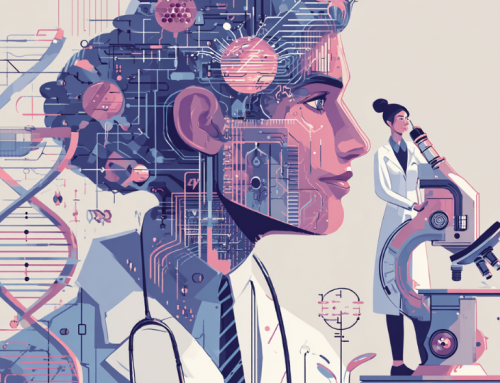
As writing programs become more sophisticated, children should be taught creative writing skills, Australian education groups say. (Source: iStock)
Educators: As Natural Language Processing Advances, Students Should Be Taught Creativity
When it comes to writing, humans could be in competition with AI in the near future. We already are using AI tools to help with our writing. Here at Seeflection.com, we use Grammarly regularly to check for writing errors. Also, predictive text AI programming has made huge strides in the last decade.
An interesting and rather lengthy article at phys.org focuses on how students in Australia are being taught the basics of writing using AI templates.
“In some schools, students write essays with sentences fulfilling specified functions, in specified orders, in specified numbers and arrangements of paragraphs. These can then be marked by computers to demonstrate progress.”
Educational organizations, however, are protesting that the system of teaching to write for tests is ruining creative writing.
“Three major reports—from the NSW Teachers’ Federation,the NSW Education Standards Authority and the NSW, QLD, Victorian and ACT governments—have criticized school writing for having become formulaic, to serve NAPLAN (the National Assessment Program—Literacy and Numeracy).”
Ironically, algorithms can do both, but it cannot be as creative as humans. The predictive text commonly used by phone and email software is a form of AI writing and algorithms are also summarizing news stories. According to an industry research organization Gartner, AI and related technology will automate production of 30% of all content found on the internet by 2022.
“Some prose, poetry, reports, newsletters, opinion articles, reviews, slogans, and scripts are already being written by artificial intelligence. Literacy increasingly means and includes interacting with and critically evaluating AI.”
This means children should no longer be taught just formulaic writing. Instead, writing education should encompass skills that go beyond AI capabilities.
Are you scared yet, human?
In 2019, the New Yorker magazine did an experiment to see if IT company OpenAI’s natural language generator GPT-2 could write an entire article in the magazine’s distinctive style. This attempt had limited success, with the generator making many errors.
But by 2020, GPT-3, the new version of the machine, trained on even more data, wrote an article for The Guardian newspaper with the headline “A robot wrote this entire article. Are you scared yet, human?” This generator could impact the future of journalism, as the Elon Musk-funded OpenAI invests ever more in research and development.
However, it’s not that simple. According to a story on bdtechtalks.com, the Guardian article sensationalized a less than stellar result.
“One of the key challenges in artificial intelligence language generators is maintaining coherence over long spans of text. GPT-3’s predecessors, including OpenAI’s GPT-2, started to make illogical references and lost consistency after a few sentences. GPT-3 surpasses everything we’ve seen so far, and in many cases remains on-topic over several paragraphs of text.”
As the phys.org article notes, “AI writing is said to have a voice but no soul” and points out that human writers, as the New Yorker’s John Seabrook says, give “color, personality and emotion to writing by bending the rules.” The story concludes that, “Creativity and co-creativity (with machines) should be fostered. Machines are trained on a finite amount of data, to predict and replicate, not to innovate in meaningful and deliberate ways.”
read more at phys.org/news







Leave A Comment